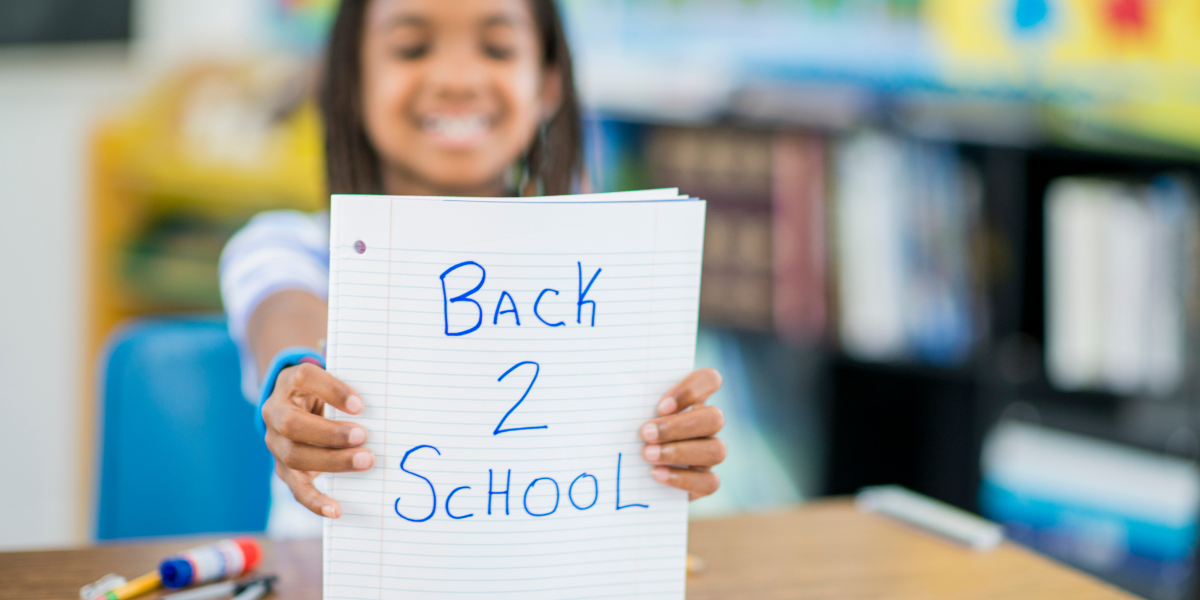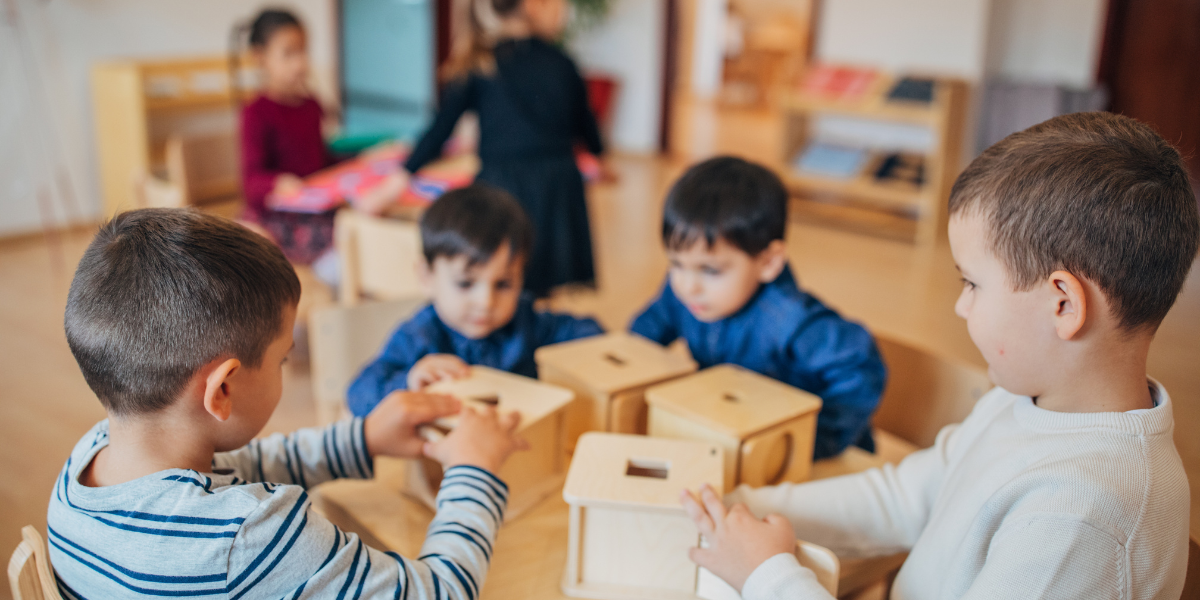12 Months of Early Childhood Teaching Ideas for the New Year
Posted by AIR Childhood Training Solutions Teacher Resource Team on Dec 21st 2022

New year, new you, new activities in your early childhood classroom.
January always brings with it so much change (maybe because you’ve had a chance to catch your breath during some well-deserved downtime during the holidays).
If you are returning to work with a refreshed and renewed outlook or are simply searching for inspiration for new activities and lessons for daycare, pre-school and pre-Kindergarten students, we have you covered.
Scroll below for ideas for each month of the year, kicking off with fun gratitude projects in January to teach about the water cycle and plants when those April showers bring May flowers to wrap up the year with a rather sweet way to teach counting -- using marshmallows!
January

January is the first month that students are back at school after an eventful winter break. In order to wrap up the holiday season, teach kids the power of demonstrating gratitude with a thank you note activity. Students can write in order to thank someone for a gift, to say it was nice to see them, or just because.
We found this great resource on teaching kids how to structure a thank you card. This activity can go so many different directions depending on the craft supplies you provide!
Here are a few ideas to get you started:
- Crayon Watercolor Thank You Cards
- Print & Color Thank You Cards
- Print & Color Thank You Cards (Advanced)
- Washi Tape Thank You Cards
February

As teachers, we have the power to teach kids how to express their emotions starting at a young age. A fun way to prepare for the Valentine’s Day exchange is to help kids create boxes for their valentines. If you don’t have enough class time, you can let kids create their own at home.
The two most important considerations when including Valentine’s Day in your lesson plan are that 1) some kids may need help getting craft/Valentine’s supplies, and 2) everyone needs to be included. With that being said, here are our favorite Valentine’s Day box ideas:
February is also American Heart Health Month. Check out these activities for teaching children about the heart and their pulse. Get more resources for teachers created by teachers on heart health.
March

March is a great month for math lovers! Whether you choose to celebrate Pi Day in your classroom or not is completely up to you and how old your students are.
Students could create a paper chain, with each color of paper representing a different digit, to hang around the room. Or, if they are older, use math as an excuse for a pizza party!
If Pi Day isn’t age appropriate, we have some fun activities for you through courses like Every Day, Every Way, Math! and Hakuna DeMATHa.
March isn’t just about math. Spring starts in March, too. Teaching kids about the seasons can be fun.
April

April is the month where the snow finally starts to melt and plants start to grow again. Take students outside once a week to record the changes in weather they feel and plants and animals they see.
Or, buy a vine plant at the grocery store and use it to teach kids how to propagate their very own baby plant. You can learn more about how gardening is helpful in a child’s development here.
And don’t forget about Earth Day! Check out some of the best Earth Day lessons and activities for preschoolers.
Need some CEUs or credit hours? Check out these courses:
- Outside the Walls (2 credit hours/0.2 CEUs)
- Taking Your Classroom Outside (1 credit hour/0.1 CEUs)
May

By May, students surely will have seen (and maybe even recorded!) some springtime rain. There are different ways to introduce the idea of the water cycle to your learners, and springtime would be the perfect time to do so!
If you think a simple lesson would be the best, you could teach them to draw a picture of rain, sun and clouds.
If they’re a little older, you can start to introduce the processes behind each stage of the water cycle. Get more ideas about teaching the water cycle to kids.
June

June means “summer,” and summer means “beach” and “relaxation!”
We love zen gardens and the idea of bringing them into the classroom. You can buy or make one for your students to use while in class, or, if you are so inclined, you can help each student create their own! Bonus points if you bring them outside to find fun rocks and artifacts to fill it up with.
Check out more information on creating a zen garden for kids.
July

July is your time to relax. Have fun!
(But if you have to work, check these outdoor arts and crafts activities from our teacher resources team.)
August

August is arguably one of the most important months of the school year!
When you have a new class of students, it’s important to help them feel comfortable with you and with each other so that they have the confidence to ask questions and make new friends.
Although ice breakers in the adult world can be kind of tedious, there are some really great ones for kids out there! Try one of these ideas.
September

September means everyone’s settled in in class and that means it’s time to get down to business! Try to pinpoint a lesson that allows room for group work. After you’ve done your part, split kids into groups to complete an activity.
For an easy way to pair kids up into groups, try some fun printable buddy match-up cards!
Or, you could create a monthly seating chart where students are clustered together in groups of four. If none of these ideas strike your fancy, try one of these.
The ultimate goal here is to help kids feel included, learn about other kids from different backgrounds, and learn how to effectively collaborate.
October

October means pretty fall leaves and colors, and we want to take advantage of that! How does creating a fall leaf lantern sound? You can either walk with students to collect their favorite leaves, or you can buy fake leaves from a craft store. The rest of the instructions are here.
Kids can save these and give them as gifts, or bring them home and put them on the dining room table or mantle!
November

During November, the weather can start to get a little bit chilly and the colors outside start to fade. To keep the classroom bright, try creating an affirmation station to encourage kids to compliment each other. Open communication has entered the chat!
You can also hang a mirror or poster up, and stick Post-It notes all around it with words of encouragement.
December

December might be the coziest month of the year.
Our favorite winter beverage is a nice cup of hot cocoa with marshmallows and cinnamon on top… but have you ever considered all of the fun ways to use marshmallows in the classroom?
They’re a great way to teach counting, and a great excuse for a hot cocoa party afterwards.
If your students are a little bit older and you want to integrate STEM into the classroom, try teaching them to create marshmallow pyramids! Bonus points if you include this lesson as a part of an Ancient Egypt unit.
Looking for More Early Childhood Teacher Resources?
Connect with us across social media for frequent teaching tips, activity ideas and more.
Our childcare professional development Pinterest boards are popular (the top post of the year was this great handout on back-to-school icebreakers). Instagram and Facebook offer loads of helpful content, including Reels of teaching tips.
Tune into Twitter and Linkedin for teacher and child care provider resources as well as business and management tips for school and center administration.
Meet Your Training Hours & Get Instant Certification
We get that being a teacher and working to give your children the best education possible is time-consuming. That’s why we make child care training courses as user-friendly as possible, with many available to educators in all 50 states..
AIR is a national leader in continuing, professional, and diverse learning opportunities that empower people of all ages to build stronger communities through the education of children.
View our courses today -- purchase on your own or work with an administrator on
Courses by Age of Child
Courses by Core Knowledge Area
- Child Growth and Development
- Child Observation and Assessment
- Family and Community Relations
- Health, Safety, and Nutrition
- Learning Experiences and Environments
- Professional Development
Courses by Role
AIR Child Care Training Solutions is nationally accredited by the IACET (International Association for Continuing Education and Training) and is authorized to issue the IACET CEU. CEU (Continuing Education Units) earned versus clock hours. (1 CEU = 10 Clock hours or 1 clock hour = 0.1 CEU). AIR Child Care Training Solutions is also approved by the Council for Professional Recognition and the National Workforce Registry.

